Known and loved in Italian cuisine, cardoons like artichokes, which makes sense as they're a giant edible thistle related to artichokes. They're also known as artichoke thistles, cardoni, carduni.
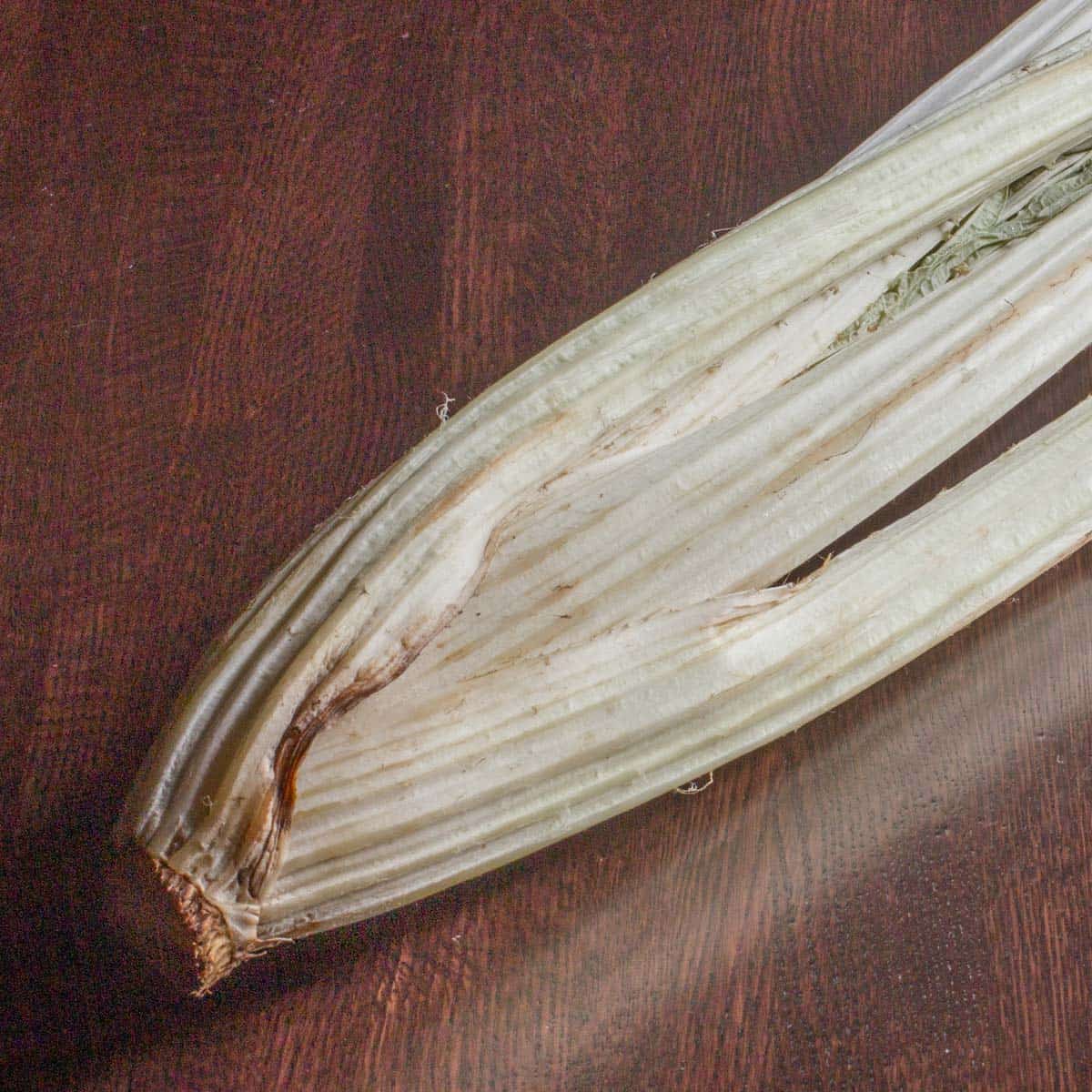
These are a delicious vegetable, but there's really only one recipe I make with them: cardoons a la grecque, which I'll share with you today, along with how I prepare cardoon stalks for cooking.
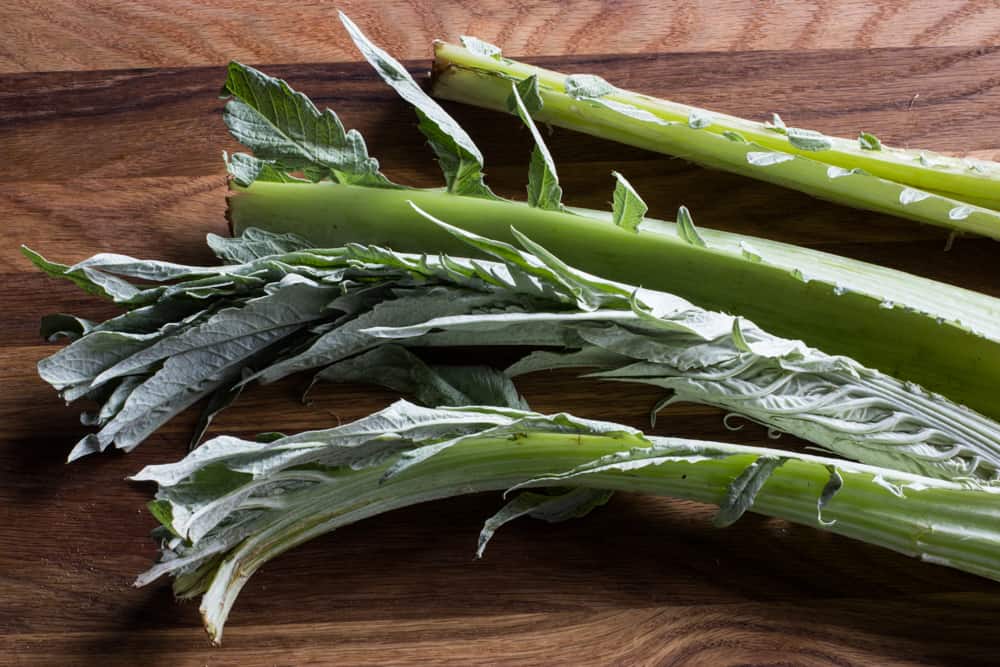
How to Prepare
They take time to clean. When the first cardoons I cooked showed up from a farmer they looked like giant bunches of celery, with a catch. The stalks are covered in long spines and painful barbed hairs, called glochids or trichomes, which are about the same as you’ll find on a cactus.
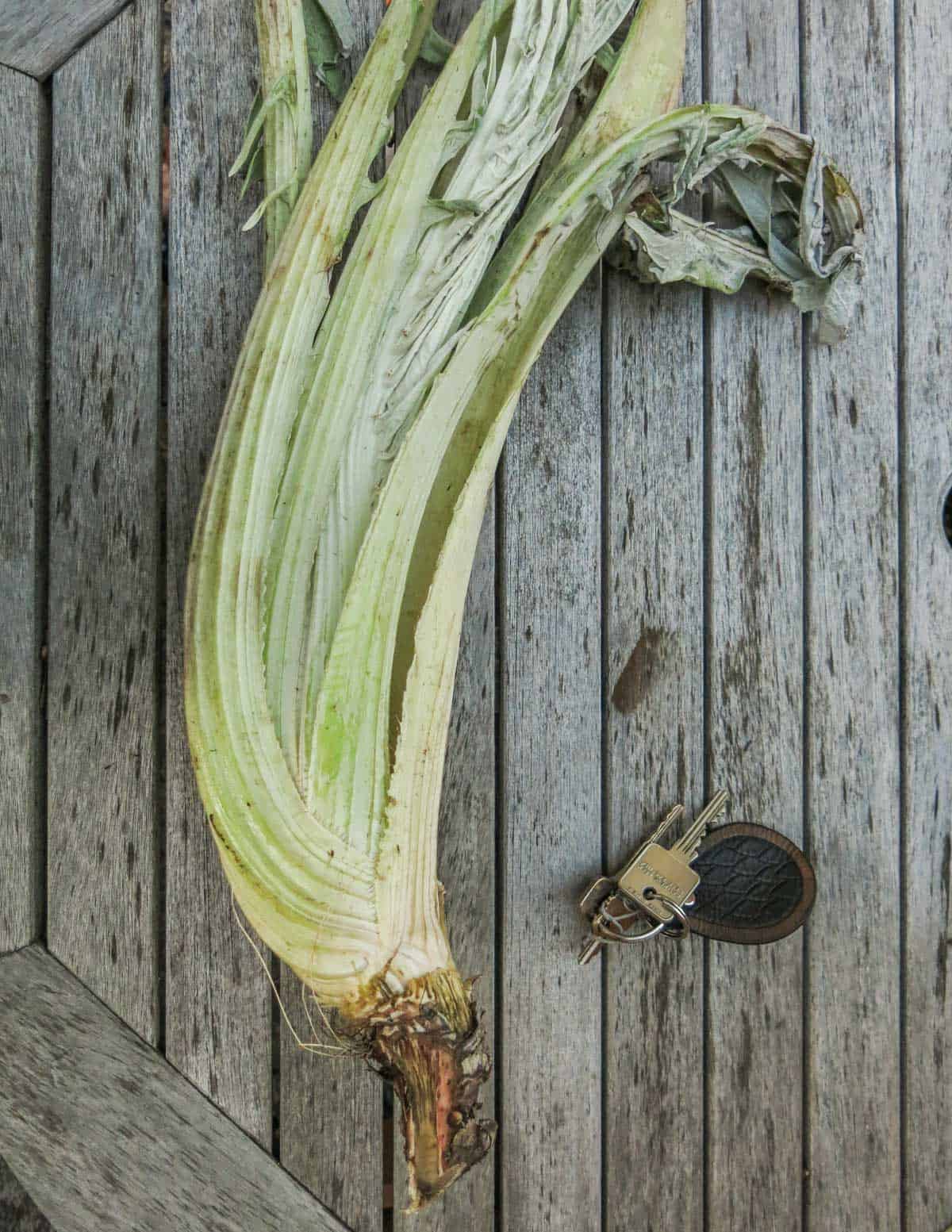
Glochids
Glochids are awful and you won’t notice them until they’re dug-in deep hours later. I remember waking up at night after cleaning cardoons, hands covered in bloody splotches that stained my sheets. Gloves aren't enough here: you'll need a thick towel to handle the stalks.
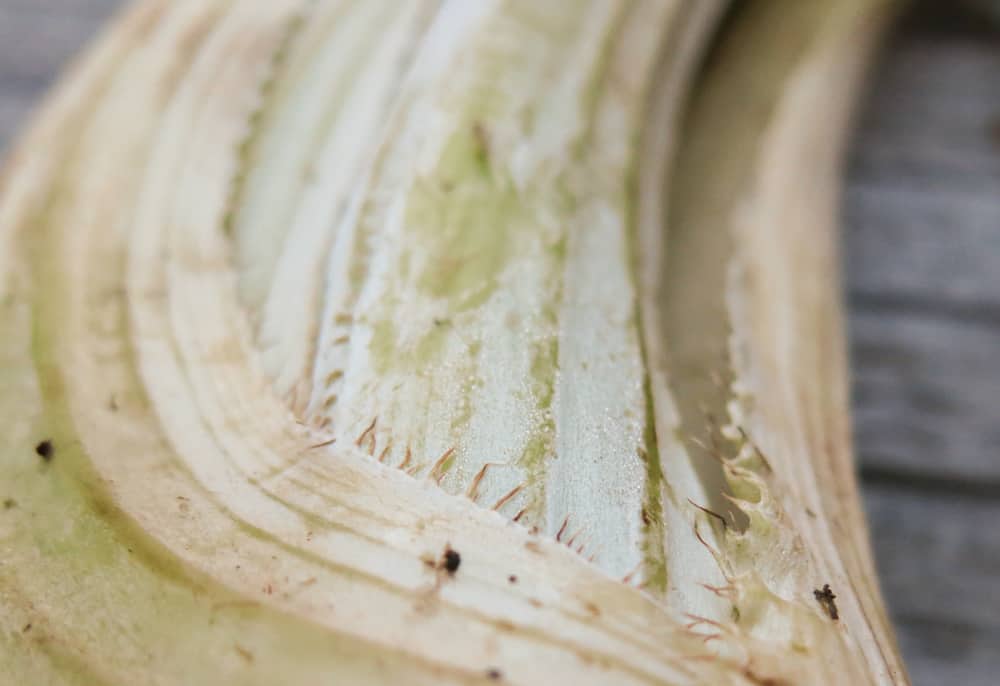
Peeling
To prepare cardoons for cooking, the first thing you have to do is cut the root base off, and separate it into individual stalks, then peel the stems with a Kuhn Rikon vegetable peeler and cut the spines and bitter leaves off the side of each stalk. I use a towel to hold them while I trim with my paring knife.
Cooking
After they're trimmed and peeled, here's what I do to cook cardoons: I cut the cardoons into 4 inch pieces, then bring a large pot of water with herbs, onions and wine and cook until tender.
Boiling cardoon pieces after trimming until tender is probably the most common method I see them prepared, and you can do it in plain water if you have to. See the video below for more.
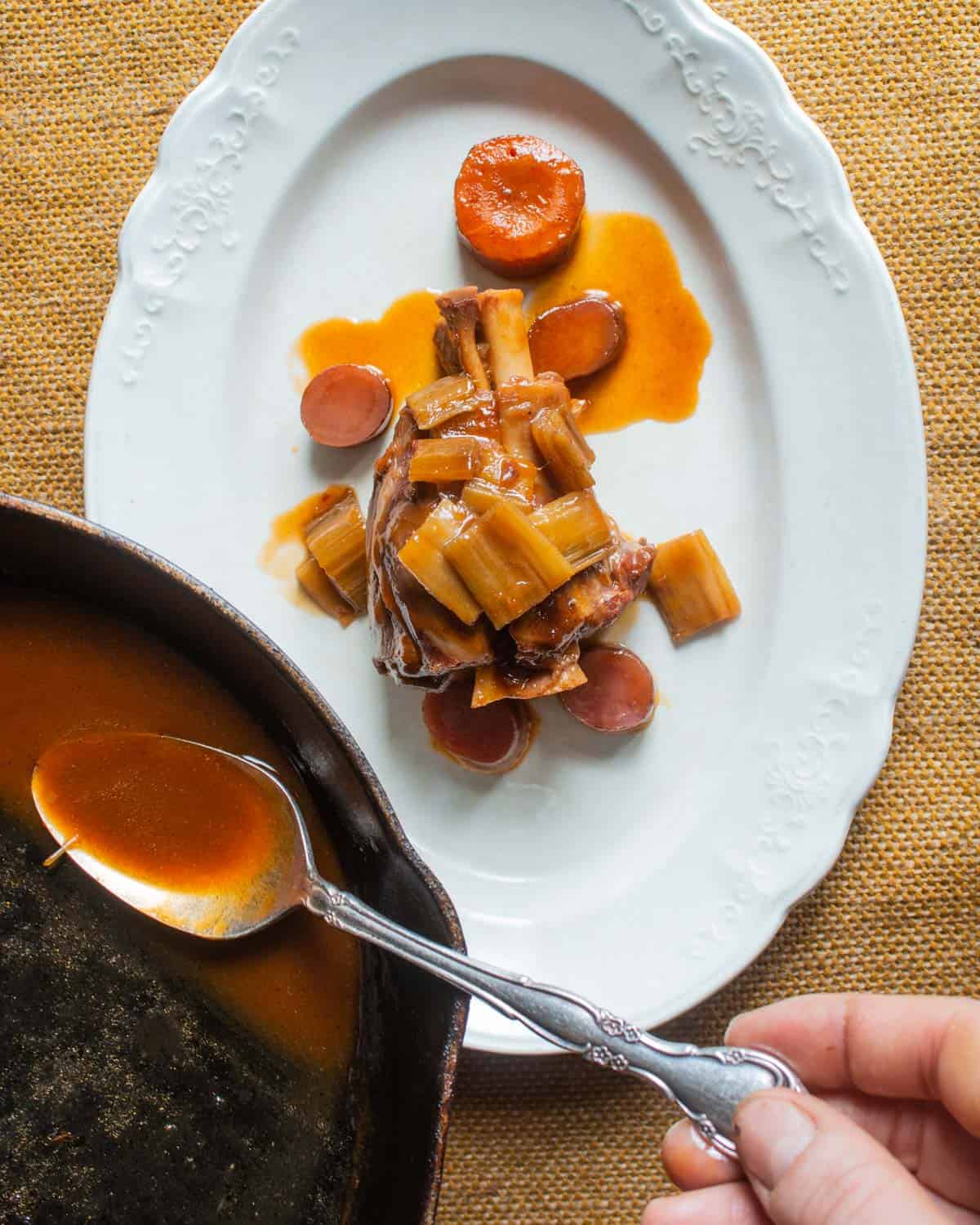
What to Make
Here's some things guests and myself have enjoyed over the years.
- Braised with tomato until tender and tossed with pasta, chili and olive oil (see the gnocchi below)
- Fried cardoon recipes are an Italian classic. To make that, trim the cardoons, then boil until tender, drain on paper towels, dip them in flour, beaten egg, and finally bread crumbs. Fry the breaded cardoons and serve with lemon wedges and spicy tomato sauce.
- Warmed up as an all-purpose garnish for fish.
- At one restaurant, I served an alfredo style pasta with a cardoon infused cream, butter and parmigiano. The flavor transfers to cream very well, ending up tasting like artichoke alfredo.
- Confit, covered with oil, garlic and herbs and cooked very slow until tender
- Added to slow cooked meat braises, especially lamb.
- Boiled with a cut onion, a splash of white wine, a pinch of salt and a bay leaf until tender, then tossed with olive oil, lemon juice and fresh herbs as for artichokes.
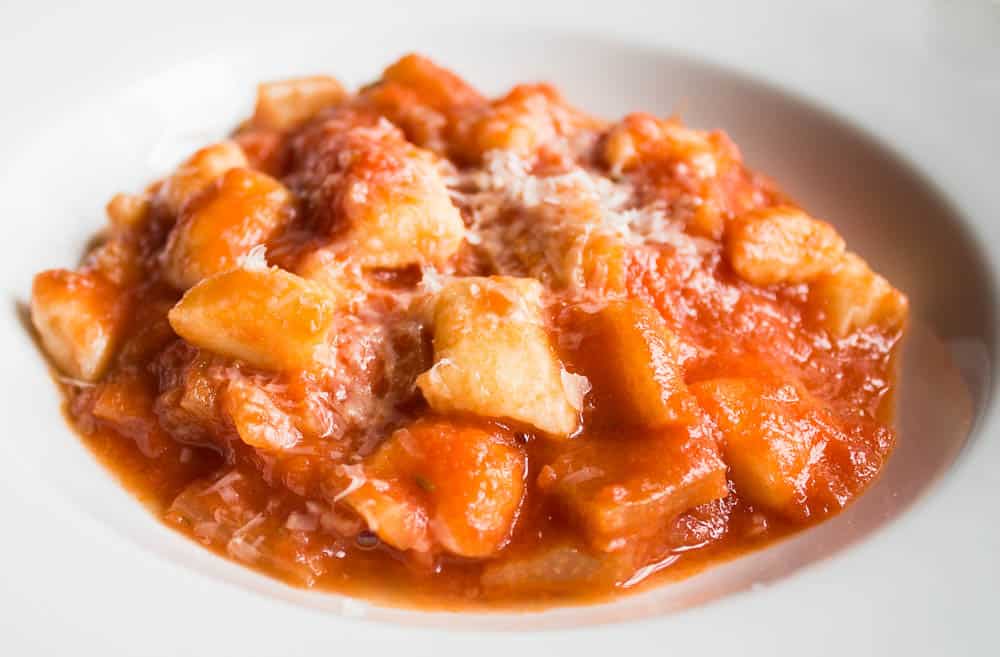
Where to Buy
It's hard to buy cardoons as not a lot of people grow them. They're often "blanched" or tying and covering with soil or hay like white asparagus. Here's a few tips to consider.
- Call and special order from a wholesaler or Italian market. A twenty pound case of cardoons used to cost 75$, but $6-7 dollars a pound is fair.
- If you're lucky, you can buy cardoons at a farmers market, but not many people grow them. These will be the most expensive.
- I usually buy cardoons directly from a farm in California, they're shipped through the restaurant purveyor BIX.
- Ethnic markets, especially Mediterranean and Italian markets.

Alla Grecque: a Versatile Preserve
Alla Grecque, or Grecian style, is basically a preserve of the stalks cooked with oil, garlic, wine and herbs that will taste like marinated artichoke hearts. I make it and it lasts for a month or more in the fridge. I add to to dishes on the menu as needed where I'd like acidity and brightness, especially with fish.
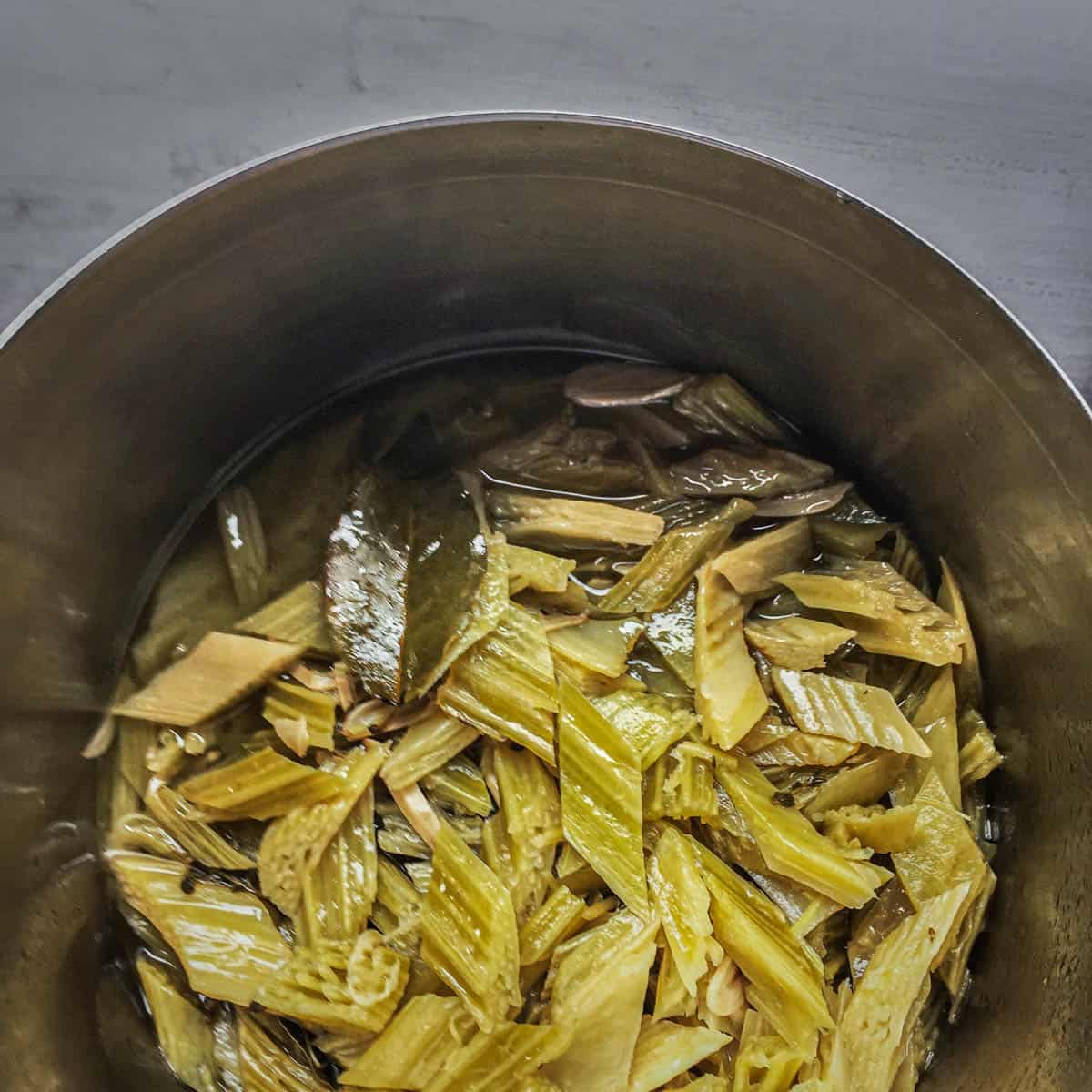
Cardoons a la Greque
Equipment
- Tall stainless steel pot (don't use aluminum)
Ingredients
- 1 cardoon about 2 lbs
- 3 large cloves garlic sliced
- 1 cup flavorless oil
- 3 cups dry white wine
- 2 teaspoons sea salt or kosher salt
- Bouquet garni of 2 fresh bay leaves and a small handful of fresh thyme wrapped in cheesecloth and tied together
- 3 cups water
- Water seasoned to taste with lemon juice as needed for holding the cardoons
Instructions
- Peel the cardoon stalks of their spines and thorns on the side of each stalk using a paring knife, then gently remove the tough outer portion of the stalk, as you would peel celery. Cut the cardoons into ½ inch pieces and place them in the lemon water to prevent browning.
- In a large, wide pan, heat the garlic on medium heat until lightly browned and aromatic, then add the cardoons, salt, wine, water, and herbs. Cover and cook for anywhere for 30 min to an hour, or until the cardoons are just tender.
- Transfer the cardoons to a labeled container, cover with their cooking liquid and weight down with a plate to hold them under the liquid and preserve them. Under their liquid the cardoons will keep for a couple weeks, they can also be frozen.
- To serve the cardoons, reheat them with a bit of their juice and use as you would artichokes.

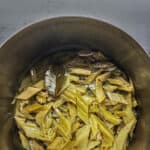
Dee
Are you sure 1 cup oil needed for this recipe? Not a typo??
Alan Bergo
Yes. You are preserving the cardoons in oil, essentially.
Maria K.D.
I’m originally from the island of Crete in Greece. As a child I remember my mom, and all the neighborhood “aunties” would often go foraging in the fields outside of town for all kinds of wild greens and snails (the best of these, dug up in the middle of summer). Wild artichokes were always a treat. We cooked both leaves and the tiny artichoke flowers! A pain to prepare, but, oh so delicious! MY personal favorite dish, to this day, wild artichoke hearts and leaves with goat, “avgolemono” the famous Greek egg-n-lemon sauce!
Btw : I grow cardoons in my backyard, in a plateau of the Sonoran desert in Arizona!
Alan Bergo
Thanks Maria.
Dee
A couple of years ago I found them at a Safeway market in northern Calif. The following year I asked the grocer about them and he had no idea what I was asking about. So again this year I found them at the same Safeway. .I had not seen them in over 45 years! My mother prepared them once or twice Scilian style with lemon when I was young. I remembered they tasted like artichoke hearts. Looking forward to trying new ways of preparing them.
Nanette Pastor-Hanna
Thanks for the peeling video! I'm in a Los Angeles suburb and just found cardoons in Sprouts market, a midsized chain based in Phoenix. I overheard another customer telling the produce man how she prepares something, and I wandered over to see what it was. Lo and behold! Cardoons. First time I've ever seen them in America!
Alan Bergo
Lucky! I’ve never seen them where I live.
Bailey
Me too! I just bought them at Sprouts on sale for $ .98/lb. (!) Apparently no one knows what they are and they were just trying to clear them out. If ever I find a vegetable I haven't heard of, I make it a challenge to learn more. Thank you Forager|Chef for the tips and recipe!
Joe Wiercinski
Yesterday, because of looming cold weather, I dug the last of two massive cardoons started from seed in my Pennsylvania garden. The stalks are in the fridge waiting for me to try a couple of your ideas for serving them to friends who like the taste of artichokes. In a very large pot fitted with a bed of compost, the roots, covered with dampened chopped leaves, will spend the next six months in an unheated garage so they won't freeze. In the spring, will the plant grow anew in a sunny bed? Fingers crossed.
Joe Wiercinski
See joewiercinski on instagram or my FB page, joe wiercinski. Yep, planted Apium graveolens. The big ones, softball size, weighed about a pound. Can I share the FB photo to you on FB?
Joe Wiercinski
Cut a cardoon stalk Saturday and served a Sunday salad of
small slices, topped with hard-cooked egg and a garlic-anchovy-egg yolk-red wine vinaigrette. Delighted to see your in al a Greque recipe that finished batches can be frozen. Gonna make a batch of that, I think, with some of my remaining stalk. I've been curious about cardoons for years and have collected a few recipes. Yours are inspiring me to plan more garden space next spring for cardoons.
Alan Bergo
They are a fantastic vegetable, and you get a way better yield than with artichokes. Glad you like them.
Joe Wiercinski
Dug 10 celeriac roots today. The 2 lbs of feeder roots taste like the bulb, I found. Plan to use them to make stock with other vegetables. I know the green stalks can be used for stock or soup but what about the feeder roots?